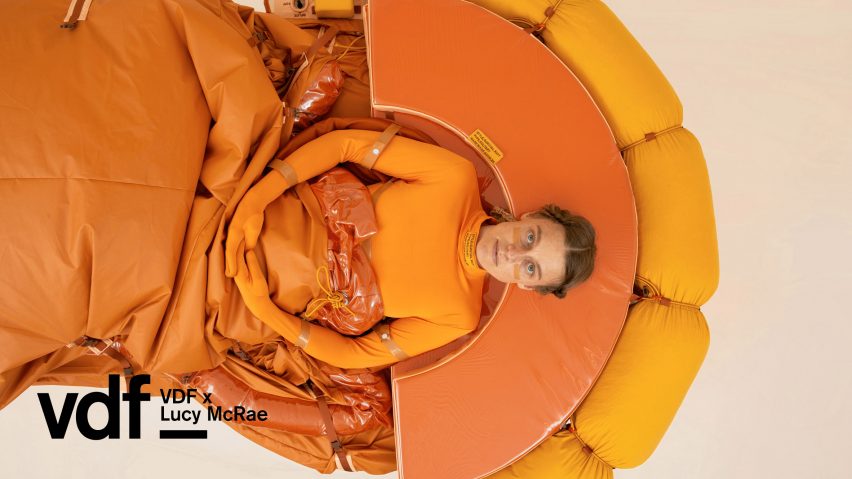
Lucy McRae's Solitary Survival Raft explores fear and hope during the coronavirus pandemic
As part of today's VDF collaboration with Lucy McRae, the artist and designer has unveiled a conceptual survival raft that comforts the sole occupant as they drift into the unknown.
Consisting of an orange inflatable raft and a matching outfit for the voyager, the artwork explores how to reconcile the human urge to explore new frontiers with the fear of the unknown.
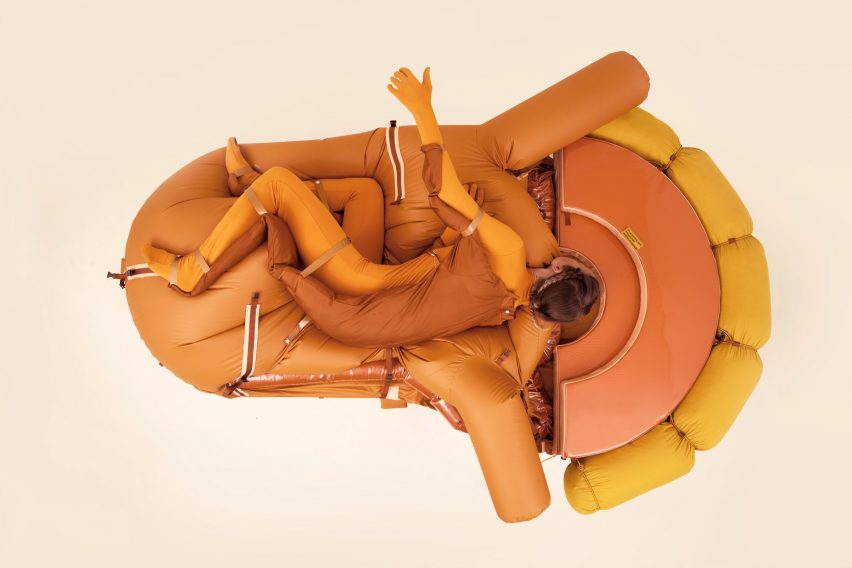
"This work speaks about chartering the unknown and with that comes fear," said McRae, who will demonstrate the raft in a live performance at 6:00pm today as part of Virtual Design Festival.
"Do you drop off the edge when you reach the horizon or merge closer to truth when you give fear the cold shoulder?"
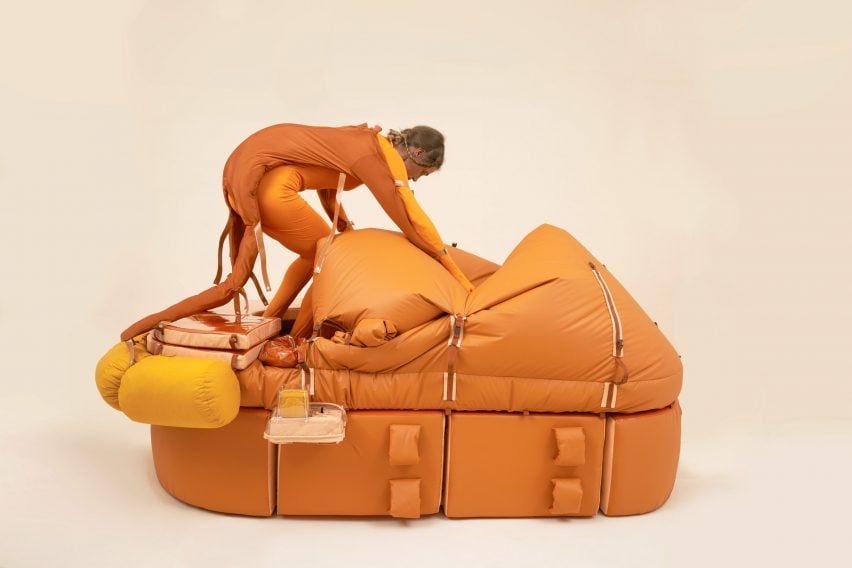
Equipped with an air pump, the raft can inflate to create a bubble around the occupant or deflate to gently embrace the voyager.
"Through the machine, her body becomes a sort of seed vault and storage facility; a touch conservationist, preserving the sense that's under threat," said the Australian, who describes herself as a "body architect".
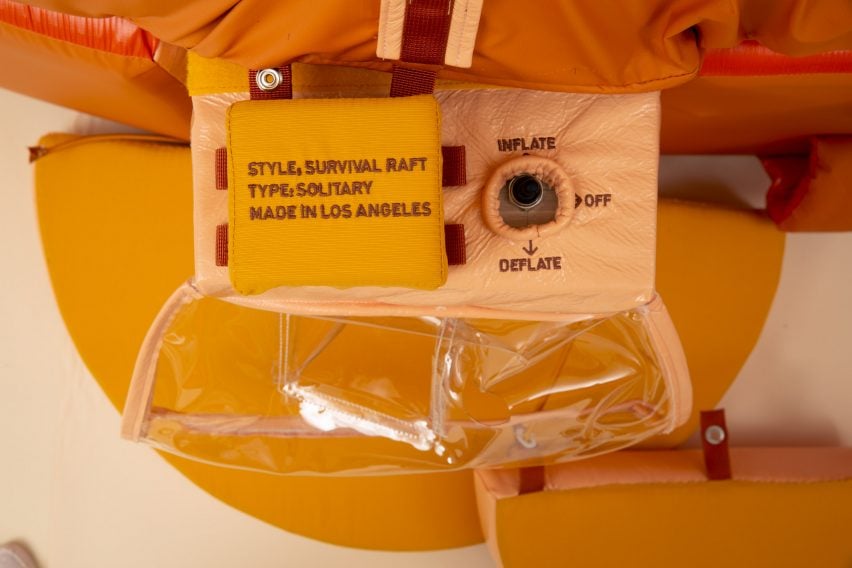
Solitary Survival Raft was commissioned for Real Feelings, a forthcoming exhibition at Haus der elektronischen Künste Basel (HeK) in Switzerland.
The exhibition explores the relationship between human emotions and technology, and the way that technology is increasingly being used to manipulate human feelings.
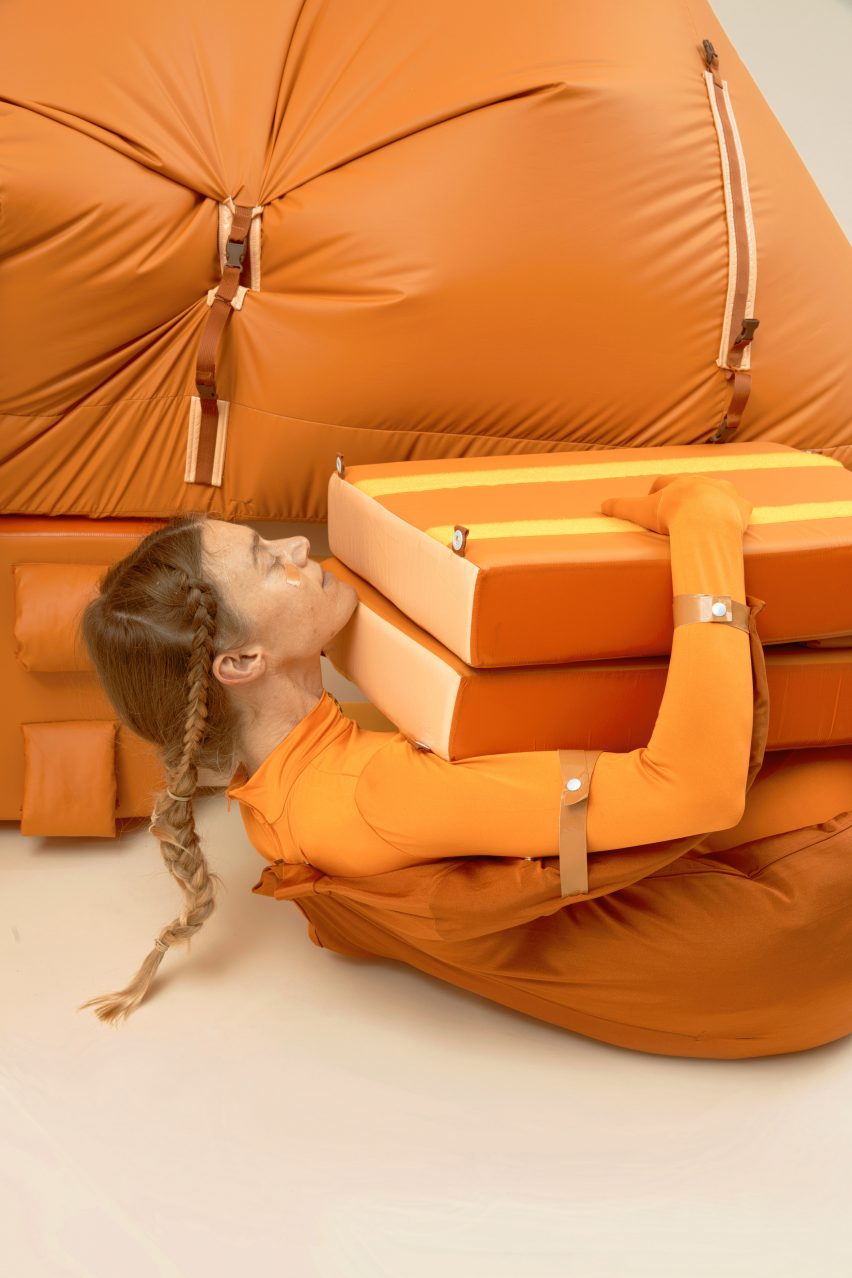
"This raft, created especially for Real Feelings while a real pandemic takes over the world and potentially changes the way we live forever, is perhaps her most solitary work yet, leaving but a small spark of survival possible," wrote Angelique Spaninks for the exhibition catalogue.
The raft is part of a series of works that McRae describes as "prototypes to test the body when confined, or deprived of physical contact."
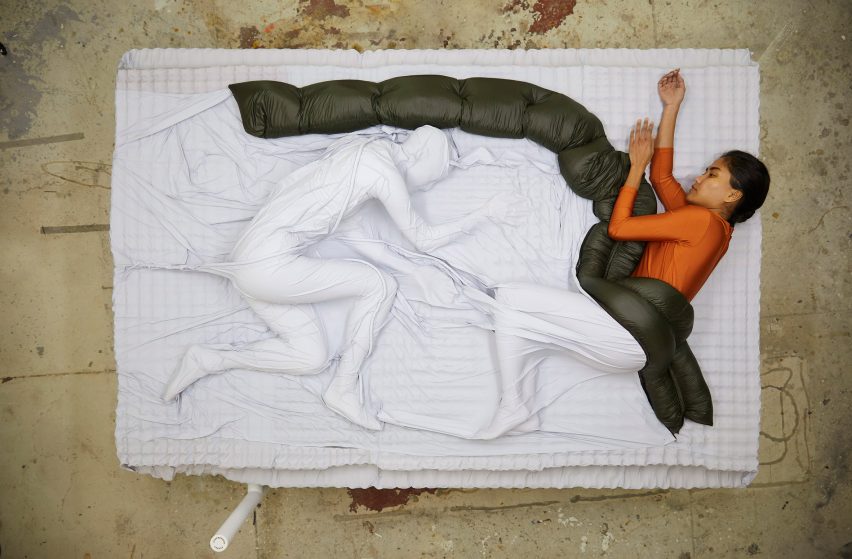
A previous work, Compression Cradle, was a machine designed "to prepare the self for a future that assumes a lack of human touch" by cocooning the body in inflatable pillows of air.
Another project, Compression Carpet, features a mechanical device filled with cushions that give a simulated full-body hug.
"We're moving towards a touch crisis where we're inundated with technology, to the point of anxiety," McRae told Dezeen at the time. "In the future, will technology vie for our affection because of our obsession with digital?"
McRae's work has long explored how isolation and long-distance travel might affect travellers' minds and bodies. In 2014, Dezeen commissioned McRae to create an installation exploring how the human body could be conditioned for lengthy space travel.
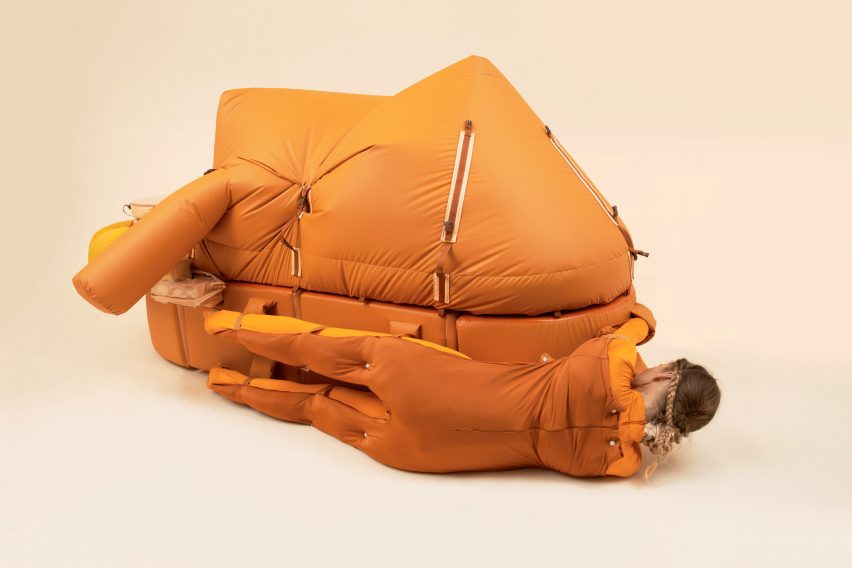
McRae said that her new raft "very much comes from the place of the pandemic" but added that it was not simply a response to the experience of lockdown.
"The raft feels more of an explanation and exploration of where we are at, rather than a demonstration of survival," she said.
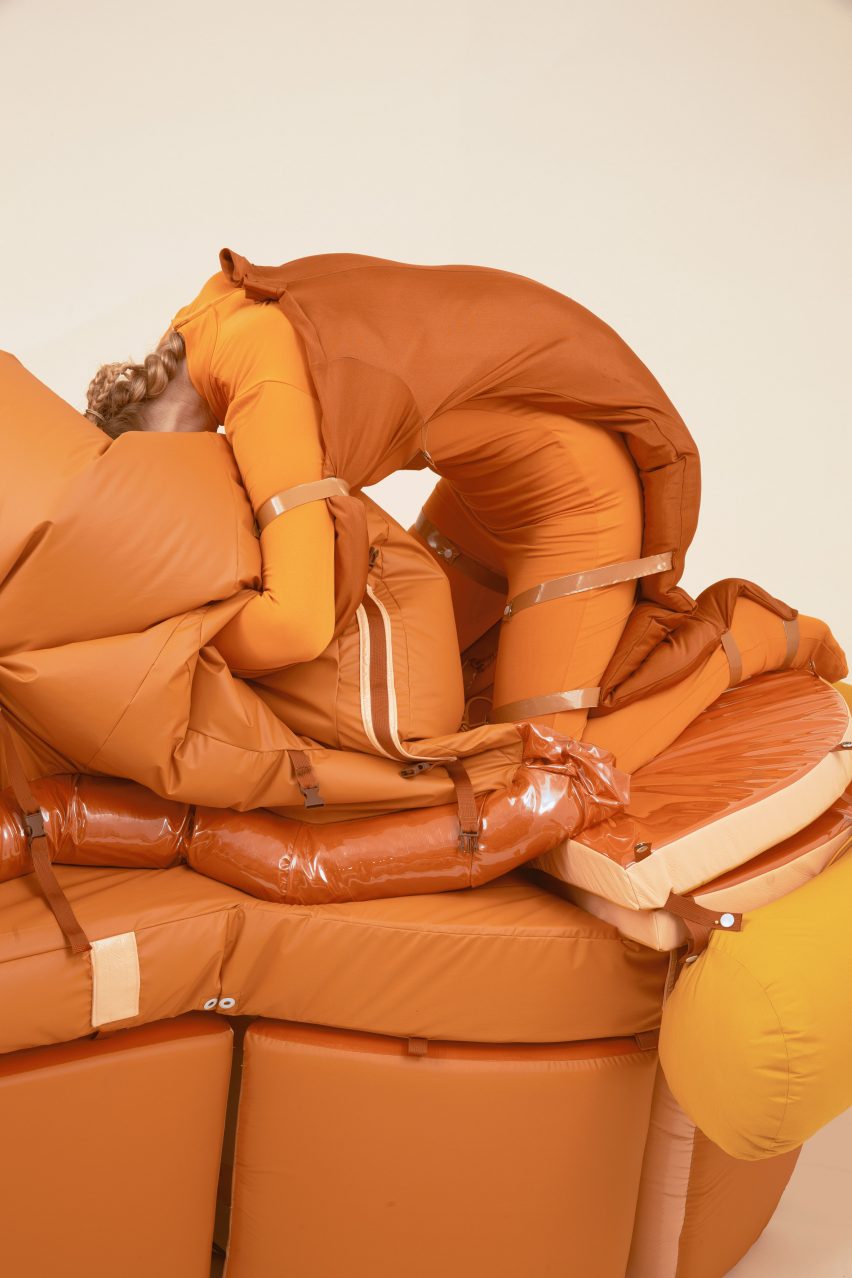
Born in London, McRae studied classical ballet in Melbourne and later joined Philips Design in the Netherlands, where she led the Far Future Design laboratory and developed wearable technology involving emotional sensors. She is now based in Los Angeles.
"I consider my work to be the job of an interpreter, tuning in to subtle signals and translating," she said. "Other than an overwhelming sense of uncertainty, the world is giving off a fuzzy signal."
